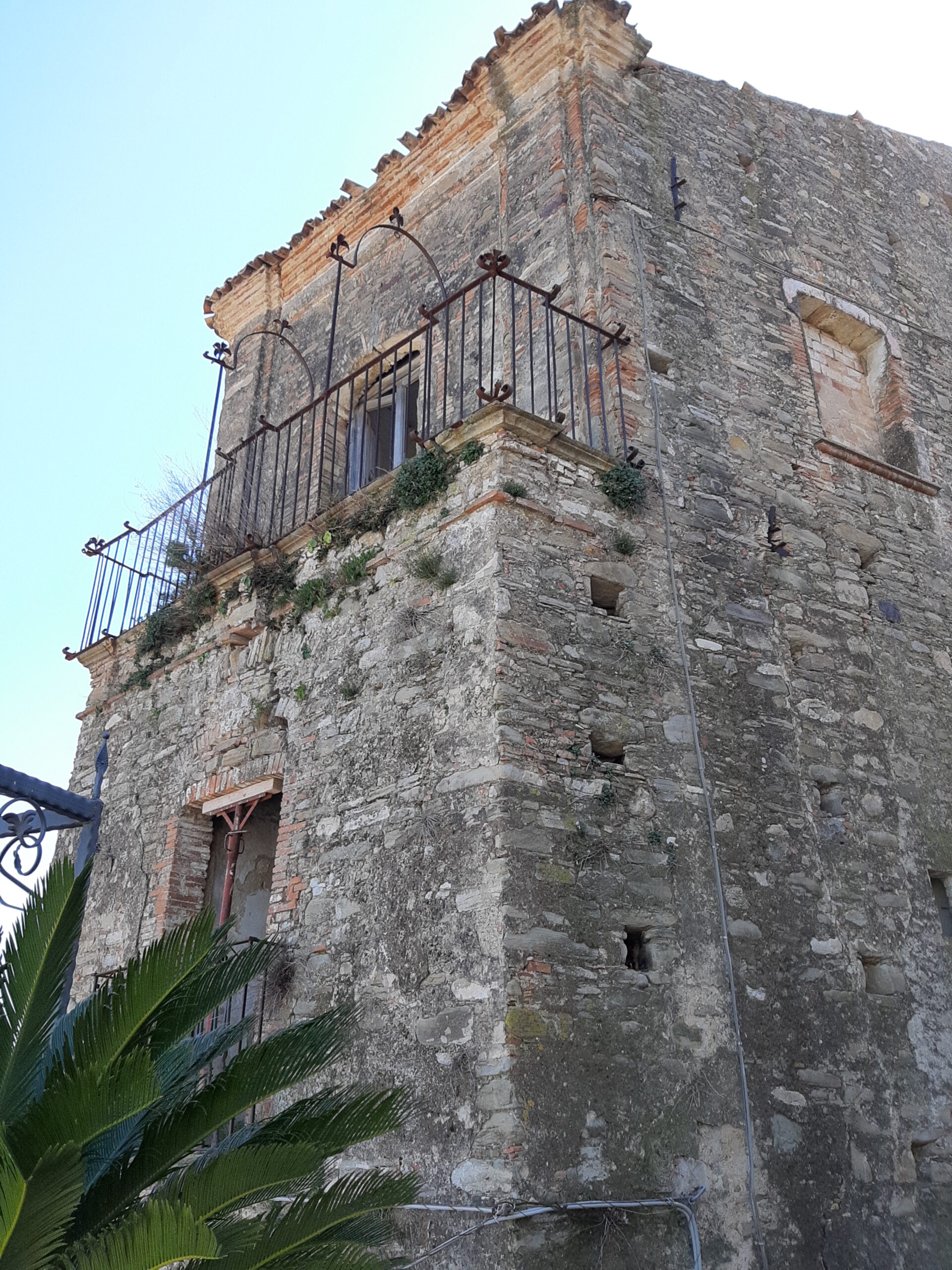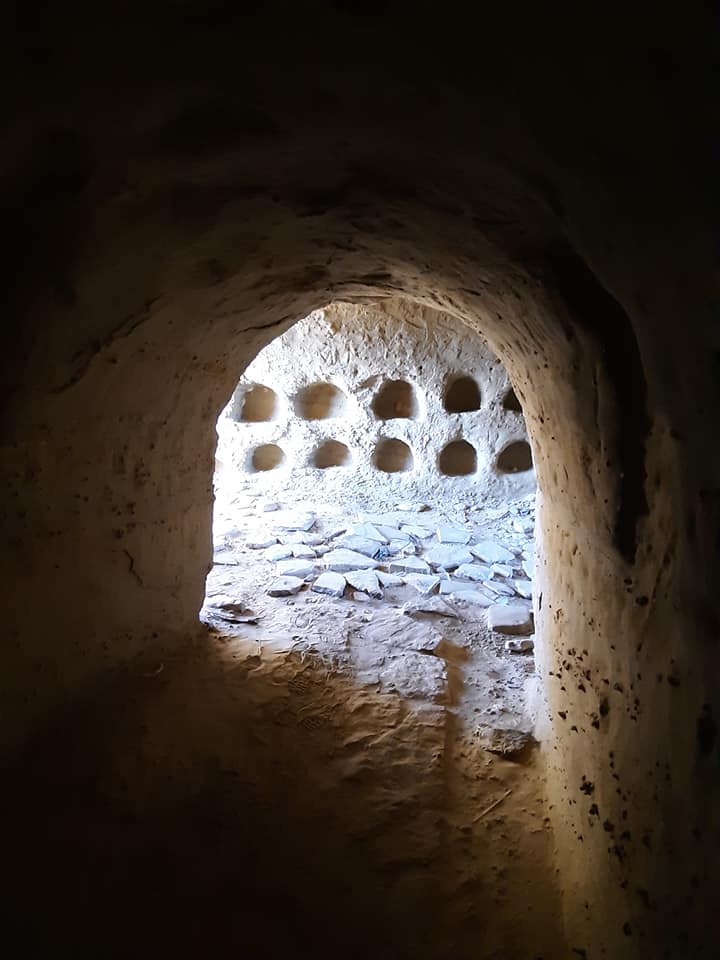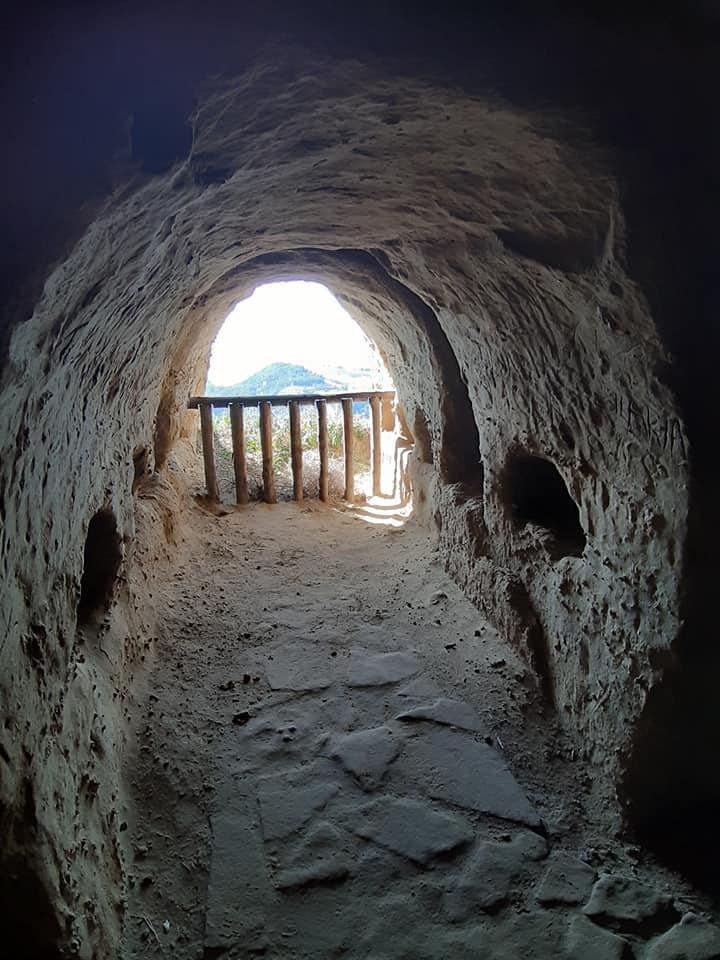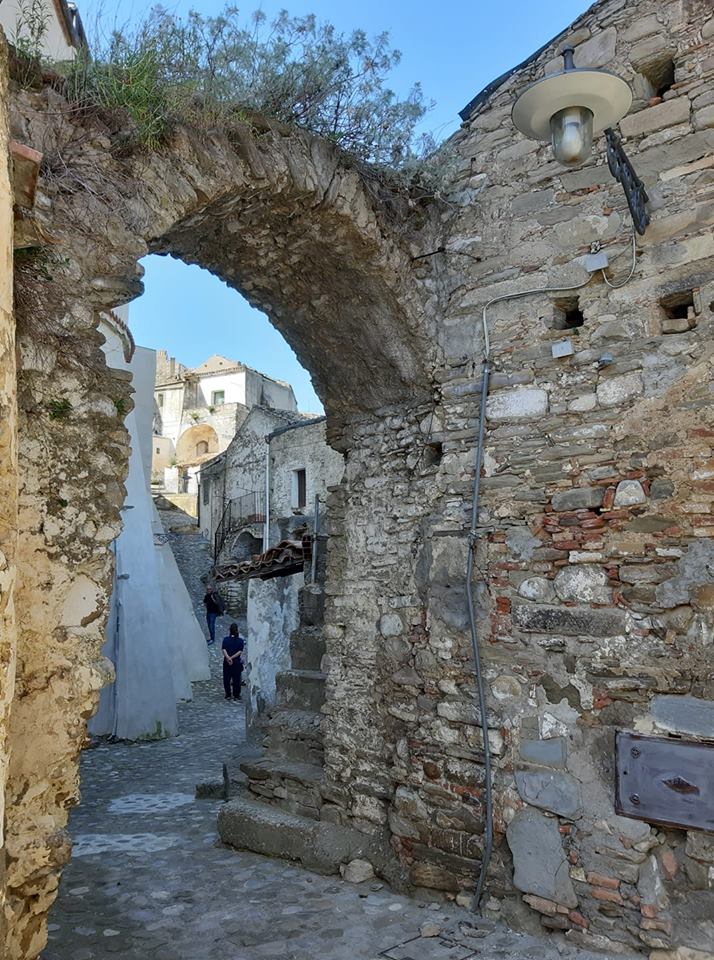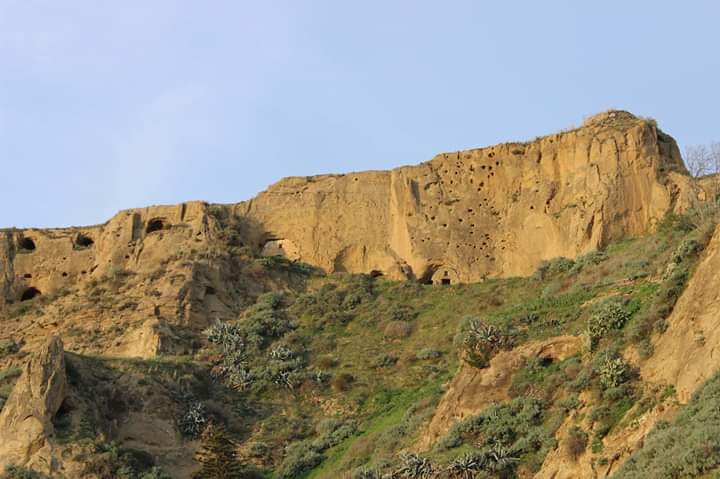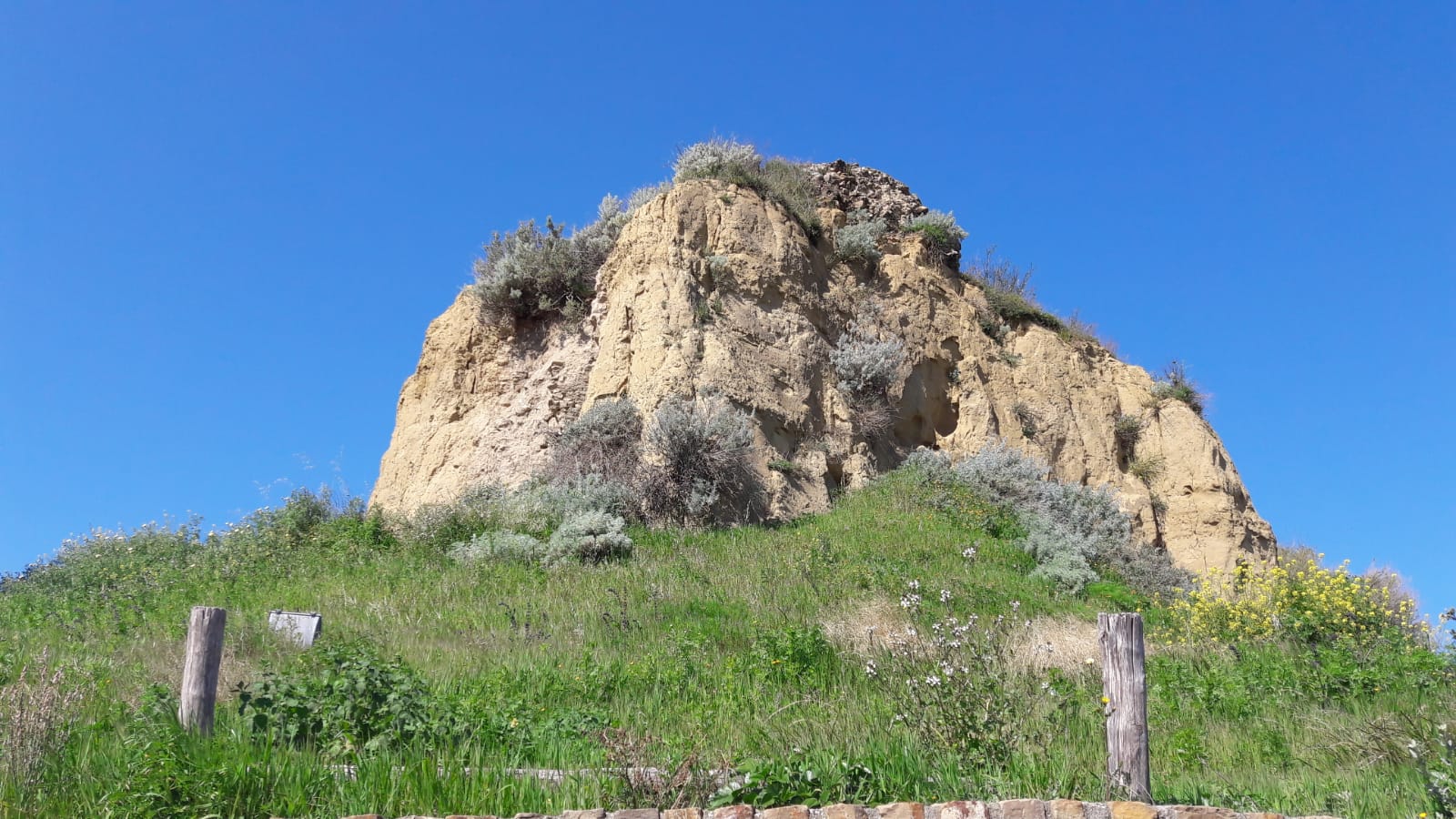
RABATANA
La Rabatana is the oldest and most characteristic district of Tursi. Defended by deep ravines (Jarammë), Rabatana is in a formidable strategic and control position between the Ionian coast and the interior of the Region, with the function of terminal of important and remote ways of communication and transhumance of the flocks. The large sandstone bank on which it stands, the so-called "Timpa", compact but easily hollowed out, has allowed man to settle there since the Bronze Age. Still today we can appreciate the tenacity of the inhabitants in maintaining the traditional life in the cave; used as cellars, deposits, stables, cisterns and in the past also as real homes, the caves represent one of the oldest and most original forms of anthropization of the entire peninsula.
It was the Byzantines, perhaps already during the Gothic War (6th century), that made Rabatana a stronghold; the intense Arab presence, which affected these places between 840 and 880, is attributed to the origin of the toponym Rabatana. In fact, it derives from the word "Ribat", which in Arabic indicates a sort of fortress. Characteristic and maintained for centuries, is the clear distinction between Rabatana and the town of Tursi, connected to each other by the "Petrizza" alone, the suggestive and panoramic path that unites them. The relationship between the two entities was characterized by a heated rivalry, so much so that it repeatedly resulted in episodes of conflict and bloody events.
Between the late 70s and the early 80s of the twentieth century, Rabatana was affected by serious problems of geological instability that caused the eviction and abandonment of a large part of it. The recovery and enhancement phase has been underway for some years, with the restoration of the Collegiate Church, some private homes and the start of craft and hospitality businesses. Currently the Rabatana di Tursi, with the Rabatane of Tricarico and Pietrapertosa, is a candidate to become a UNESCO World Heritage Site.
La Rabatana è il più antico e caratteristico quartiere di Tursi. Difesa da profondi burroni (Jarammë), la Rabatana si trova in formidabile posizione strategica e di controllo tra la costa jonica e l’interno della Regione, con la funzione di terminale di importanti e remote vie di comunicazione e di transumanza delle greggi. Il grande banco di arenaria sul quale sorge, la cosiddetta “Timpa”, compatto ma facilmente incavabile, ha consentito all’uomo di potervisi stanziare sin dall’età del Bronzo. Ancora oggi possiamo apprezzare la tenacia degli abitanti nel mantenere la tradizionale vita in grotta; usate come cantine, depositi, stalle, cisterne ed in passato anche come vere e proprie abitazioni, le grotte rappresentano una delle forme di antropizzazione più antiche ed originali dell’intera penisola.
Furono i Bizantini, forse già durante la Guerra Gotica (VI secolo), a fare della Rabatana una roccaforte; alla intensa presenza Araba, che interessò questi luoghi fra l’840 e l’880, è attribuita l’origine del toponimo Rabatana. Esso deriva infatti dalla parola “Ribat”, che in lingua Araba indica una sorta di fortilizio. Caratteristica e mantenuta per secoli, è la netta distinzione tra la Rabatana e l’abitato di Tursi, collegati fra loro dalla sola “Petrizza”, il suggestivo e panoramico sentiero che li unisce. Il rapporto fra le due entità fu caratterizzato da un’accesa rivalità, tanto da sfociare più volte in episodi di conflitto e fatti di sangue.
Tra la fine degli anni ’70 ed i primi anni ’80 del Novecento, la Rabatana venne interessata da gravi problemi di instabilità geologica che provocarono lo sgombero e l’abbandono di buona parte di essa. Da alcuni anni è in atto la fase di recupero e valorizzazione, con il restauro della Chiesa Collegiata, di alcune abitazioni private e l’avvio di attività artigianali e ricettive. Attualmente la Rabatana di Tursi, con le coeve Rabatane di Tricarico e Pietrapertosa, è candidata a divenire Patrimonio mondiale dell’umanità Unesco.





